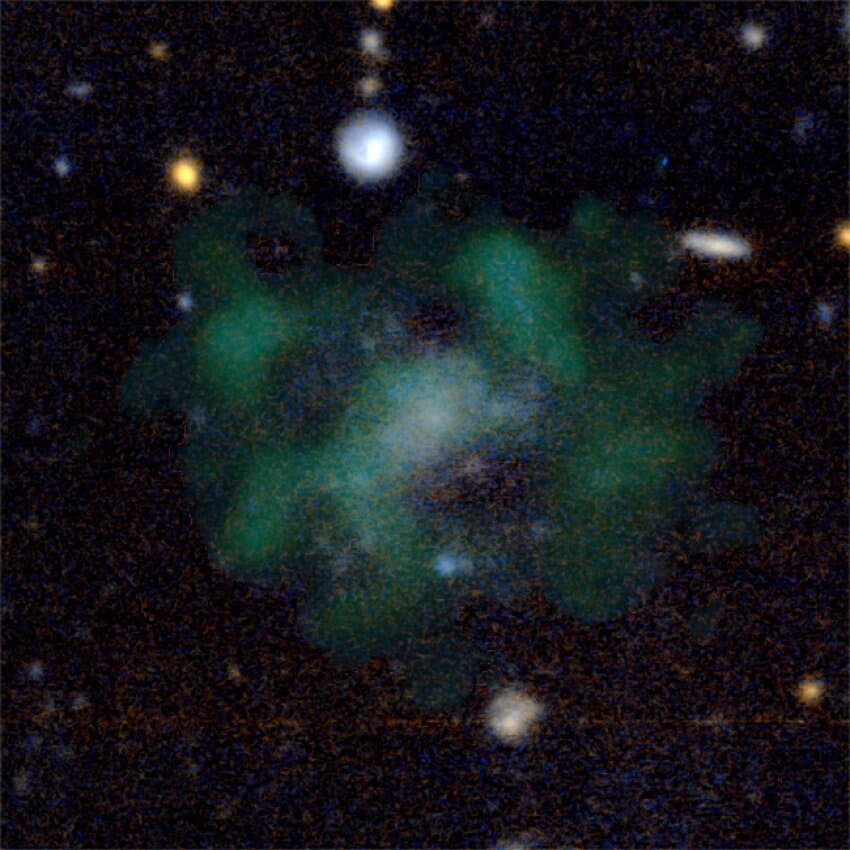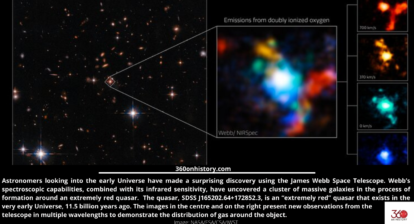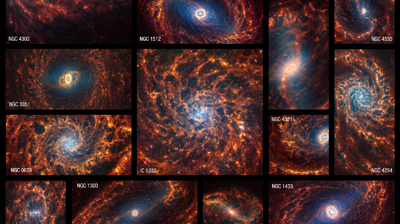You might think that there is a lot of matter in the universe because we can see it. In reality 85% of the matter in the cosmos is dark matter, which may comprise of as yet undiscovered subatomic particles. In the standard Lambda-CDM model of cosmology, the total mass–energy of the universe contains 5% ordinary matter and energy, 27% dark matter and 68% of a form of energy known as dark energy.
There are three classifications of dark matter, cold, warm or hot, depending on its velocity (or what is known as free streaming length). Our current astrophisics supports a cold dark matter scenario, in which structures emerge by the gradual accumulation of particles.
What is Dark Matter?
Dark matter is what holds galaxies together, otherwise their stars would fly apart or they would not have formed or would not move/rotate as they do, if they did not contain a large amount of this matter. It is the glue that holds them together. But the problem is that it is not visible. Scientists think its presence is implied through observations, including gravitational effects that cannot be explained by accepted theories of gravity, unless more matter is present than can be seen. Because of this it is thought that the universe is not only full of dark matter but that this unseen matter strongly infliuences the universe’s structure and evolution. The reason they call it dark matter is because it does not react with the electromagnetic field, which means we cannot detect it or see it. The only way scienstist observe it is through its gravitational effects on galaxy structures.
However, something new is confounding this understanding. Astonomers have located six galaxies that seem to be devoid of or have very little dark matter. Even when told to measure them again, which they did for 40 hours between July and October 2020, with high-tech telescopes, the astronomers were able to confirm that there was no dark matter in the galaxy AGC 114905. This galaxy is approximately 250 million light-years away and is classified as an ultra-diffuse dwarf galaxy, meaning that while it is the size of our Milky Way galaxy, it contains much fewer stars. Ultra-deffuse galaxies are thought to exist only due to the presence of dark matter, which holds them together.
The astronomers subsequently used the observation data to graph the motion of gas from the center of the galaxy, and were able to show that the motion of the gas in AGC 114905 can be entirely explained by just normal matter.
What is the reason for this anomaly? The team suggested that the galaxy could have been stripped of all its dark matter by the gravity of larger nearby galaxies. However, there are none in their location. According to Pavel Mancera Piña, lead author of the study, “… in the most reputed galaxy formation framework, the so called cold dark matter model, we would have to introduce extreme parameter values that are far beyond the usual range. Also with modified Newtonian dynamics, an alternative theory to cold dark matter, we cannot reproduce the motions of the gas within the galaxy.”
The other thing that could change these conclusions is the angle of observation “But that angle has to deviate very much from our estimate before there is room for dark matter again,” says co-author Tom Oosterloo (ASTRON).
In any case, the team is once again observing the galaxy in detail to confirm these findings. It should be noted here that there have been other instances where galaxies with missing dark matter have been observed.
So, it seems the mystery of dark matter just got more mysterious.
The study has been accepted for publication in Monthly Notices of the Royal Astronomical Society.



![The Great Dark Spot (top), Scooter (middle white cloud),[97] and the Small Dark Spot (bottom), with contrast exaggerated.](https://www.360onhistory.com/wp-content/uploads/2024/01/Neptune_storms-414x224.jpg)



